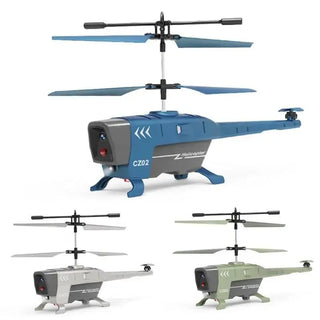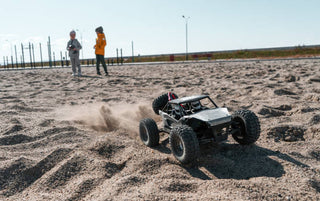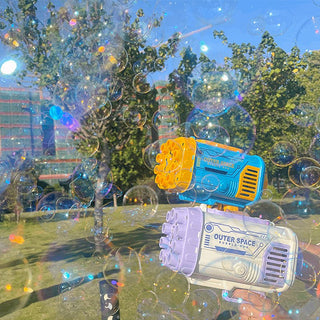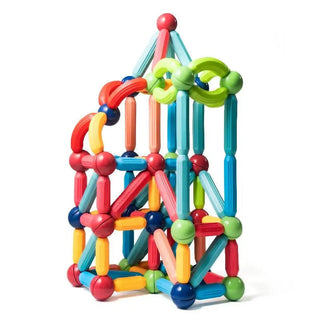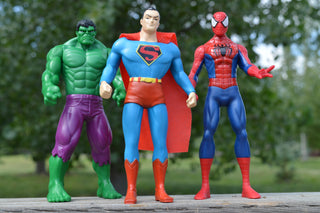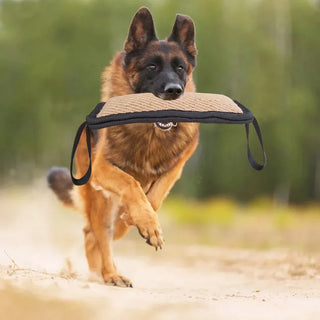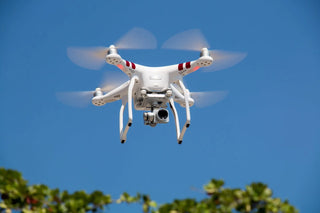Ever wonder where Amazon's drone deliveries are actually happening? It's a pretty cool idea, getting your stuff dropped off by a drone. But, you know, it's been a bit of a bumpy ride for Amazon trying to get this whole drone thing off the ground. They've had some stops and starts, and even a few changes in where they're trying it out. So, let's take a look at the current amazon drone delivery locations and what's been going on with them.
Key Takeaways
- Amazon has restarted drone deliveries in Texas and Arizona after a temporary halt.
- The pause was due to an altitude sensor issue, which has now been fixed with a software update.
- Amazon aims to deliver 500 million packages annually by drone by the end of the decade.
- A new drone, the MK30, is quieter and can fly in more weather conditions.
- The company is also expanding services, like delivering prescription drugs, and getting FAA approval for longer flights.
Current Amazon Drone Delivery Locations
Amazon's drone delivery program, Prime Air, is actively operating in a couple of locations. While there have been some pauses and adjustments, the service is up and running in select areas. Let's take a look at where you can currently expect to see Amazon drones buzzing around.
Texas Operations in College Station
College Station, Texas, is one of the primary locations for Amazon's drone delivery service. This is where Amazon first launched its drone delivery program and continues to refine its operations. Residents in College Station can order eligible items and have them delivered via drone in under an hour. Amazon has even partnered with Amazon Pharmacy to deliver prescription medications in this area. The company is gathering feedback from customers and communities as they continue to roll out the service.
Arizona Operations in Tolleson
Tolleson, Arizona, is another key location for Amazon's drone delivery efforts. Similar to College Station, residents in Tolleson can receive drone deliveries for a variety of items. However, operations were temporarily suspended earlier this year to implement a software update addressing altitude sensor issues caused by the area's dusty air. Now, the drone delivery service has resumed.
Resumption of Services
After a temporary pause in January 2025, Amazon has resumed its drone delivery services in both College Station, Texas, and Tolleson, Arizona. The pause was due to a software update needed to address issues with the drone's altitude sensor, particularly in the dusty conditions of Arizona. With the update implemented and FAA approval secured, Prime Air is back in operation, aiming to provide faster and more convenient deliveries to customers. Amazon is working towards its goal of delivering 500 million packages annually via drone by the end of the decade.
Amazon is committed to the safety and reliability of its drone delivery system. The company is continuously working to improve its technology and processes to ensure safe and efficient deliveries. They are also working closely with the FAA to ensure compliance with all regulations.
Past Amazon Drone Delivery Locations

Lockeford, California Pilot Program
Amazon's drone delivery ambitions haven't always been smooth sailing. One of the earliest public tests took place in Lockeford, California. The Lockeford pilot program aimed to serve a small community with drone deliveries, offering a glimpse into a future where packages arrive via the sky. However, the program was eventually shut down. This closure marked a shift in Amazon's strategy as they re-evaluated their approach to drone delivery.
Strategic Business Reasons for Closure
Several factors likely contributed to the decision to close the Lockeford site. It's not uncommon for companies to adjust their strategies based on real-world data and operational challenges. Here are some potential reasons:
- Logistical hurdles specific to the Lockeford area.
- Cost considerations associated with maintaining a pilot program.
- A shift in focus towards other locations with potentially higher demand or more favorable conditions.
It's important to remember that pilot programs are designed to test and refine concepts. The closure of the Lockeford site doesn't necessarily indicate a failure of the overall drone delivery initiative, but rather a strategic adjustment based on lessons learned. Amazon likely used the data gathered from Lockeford to inform their approach in other locations like College Station and Tolleson. The FAA approval process is complex, and Amazon is likely working to meet all requirements for future expansion.
Recent Service Interruptions and Resolutions
Altitude Sensor Anomaly
Earlier this year, Amazon temporarily halted its drone delivery operations in College Station, Texas, and Tolleson, Arizona. This pause was initiated due to the discovery of an anomaly with the drone's altitude sensor. The issue stemmed from dust particles potentially causing inaccurate readings of the drone's position relative to the ground. While no actual safety incidents occurred, Amazon proactively suspended services to address the concern.
Software Update Implementation
To rectify the altitude sensor issue, Amazon developed and implemented a comprehensive software update for its drone fleet. The software changes were designed to ensure the drones could accurately assess their altitude, even in dusty conditions. The update was rolled out across the entire fleet, requiring a temporary suspension of delivery services. The company emphasized that the safety of its operations is paramount, and the pause allowed for thorough testing and validation of the updated software.
FAA Approval for Resumption
Following the implementation of the software update, Amazon sought and obtained approval from the FAA to resume its drone delivery services. The FAA's approval process involved a rigorous review of the updated software and safety protocols. With the green light from the FAA, Amazon was able to bring its drone deliveries back online, restoring services to customers in Texas and Arizona. The company continues to work closely with the FAA to ensure ongoing compliance and safety.
Amazon's commitment to safety is evident in its proactive approach to addressing potential issues. The temporary suspension of services, coupled with the implementation of a software update and FAA approval, demonstrates a dedication to maintaining the highest standards of safety and reliability in its drone delivery operations.
Here's a quick timeline of the events:
- January 17, 2025: Drone delivery services suspended.
- February 2025: Software update implemented.
- Late February 2025: FAA approval received.
- Early March 2025: Services resumed.
Advancements in Drone Technology
Amazon's drone program is not standing still; it's constantly evolving with new tech. They're pushing the boundaries of what's possible with drone delivery, and it's pretty interesting to watch.
Introduction of the MK30 Drone
The MK30 drone is a big step up from previous models. It's designed to be quieter, fly farther, and handle more weather conditions. It even went through an aerospace-grade certification process with the FAA. The MK30 drone has also started making deliveries in College Station, Texas. It's a big deal because it shows Amazon is serious about improving its drone tech.
Improved Noise Reduction and Weather Capability
One of the biggest complaints about drones is the noise. Amazon seems to have listened, because the MK30 is supposedly 50% quieter than the old drones. That's a huge improvement, especially for deliveries in residential areas. Plus, the fact that it can fly in the rain means deliveries won't be grounded as often. The MK30 is built to fly in rainy weather.
Beyond Visual Line of Sight Approval
Getting approval for BVLOS operations is a game-changer. It means drones can fly farther and deliver to more customers. This approval allows Prime Air to further expand drone deliveries and lays the foundation to safely scale operations to more locations in the U.S. It's a big hurdle to clear, and it opens up a lot of possibilities for the future of drone delivery.
Amazon is working hard to demonstrate the reliability of its drone system to regulators around the world. They're collecting data from indoor and outdoor test facilities to prove that their drones are safe and dependable. This is important for getting the necessary approvals to expand their drone delivery service.
Here's a quick rundown of the improvements:
- Quieter operation
- Increased flight range
- Better weather resistance
Expanding Delivery Capabilities
Prescription Drug Delivery
So, they're not just dropping off phone chargers and snacks anymore. Amazon's been testing prescription medications delivery via drone in College Station, Texas. It's pretty cool to think about how this could help people who have trouble getting to a pharmacy, or who need something urgently. I imagine it's still in the early stages, but the potential is huge. I wonder if they'll expand this to other medications soon?
Faster Delivery Times
The whole point of drone delivery is speed, right? Amazon is really pushing to make deliveries happen in under an hour. They're doing this by setting up these smaller, hybrid sites that act as both fulfillment centers and delivery stations. This means they can get packages out to customers even quicker. It's all about getting that stuff to your door ASAP. I'm all for it, especially when I forget to buy coffee filters.
Integration with Same-Day Delivery Sites
Amazon is now integrating drone operations with their same-day delivery sites. The new MK30 drones will deploy from facilities next to the same-day delivery site in Tolleson, Arizona. These sites are located close to metro areas, which means customers get their orders faster. This integration allows for same-day delivery on millions of items.
It's interesting how Amazon is trying to blend drone delivery into its existing logistics network. It makes sense to use the same infrastructure and resources to get packages to people faster. I'm curious to see how this integration will evolve and if it will lead to even faster delivery times in the future.
Future Goals for Amazon Drone Delivery

Amazon has big plans for its drone delivery service, aiming to make it a major part of its logistics network. While there have been some bumps in the road, the company is pushing forward with ambitious targets and expansion strategies.
Targeting 500 Million Packages Annually
Amazon's primary goal is to deliver 500 million packages by drone each year by the end of the decade. This is a huge jump from the current numbers and requires significant scaling of their operations. To achieve this, they're focusing on improving drone technology, expanding their service areas, and streamlining the delivery process. It's a bold target, but Amazon seems determined to make it happen. They've already received FAA approval to conduct Beyond Visual Line Of Sight missions around the College Station area.
Continued Expansion Plans
Amazon isn't just focusing on current locations; they're actively planning to expand their drone delivery service to more areas. This includes:
- Identifying new locations that are suitable for drone delivery.
- Working with local authorities to get the necessary approvals.
- Building new delivery stations to support the expanded service area.
The company is carefully evaluating different regions, considering factors like population density, weather patterns, and regulatory environment. They want to ensure that the expansion is both efficient and safe.
International Market Exploration
While the initial focus is on the US market, Amazon has its sights set on international expansion. They've already eyed international expansion to the U.K., and are exploring opportunities in other countries as well. This will involve navigating different regulatory landscapes and adapting their technology to suit local conditions. It's a complex undertaking, but Amazon believes that drone delivery has the potential to be a global service.
Safety and Regulatory Compliance
Amazon's drone delivery program isn't just about getting packages to your door quickly; it's also about doing it safely and within the bounds of the law. It's a complex dance between innovation and responsibility, and they're trying to get it right.
Adherence to FAA Regulations
Navigating the skies means playing by the FAA's rules. Amazon has to get all sorts of approvals and certifications to operate their drones. This includes things like proving the drones are safe, the pilots are trained, and the whole operation meets specific standards. It's not a one-time thing either; they have to keep showing they're following the rules. Think of it like getting your car inspected regularly, but for drones.
Continuous Safety Improvements
Safety is a moving target, and Amazon knows it. They're constantly working to make their drone delivery system safer. This means investing in new technologies, improving their training programs, and learning from any incidents that happen. It's all about reducing risks and making sure the drones don't cause any harm. They are always looking at ways to improve drone safety.
Rigorous Evaluation Processes
Before any new drone or software update goes live, it goes through a ton of testing. Amazon needs to prove that everything works as expected and that there aren't any hidden dangers. This includes simulations, test flights, and careful analysis of the data. It's like a science experiment, but with real-world consequences if something goes wrong.
It's worth noting that Amazon's commitment to safety isn't just about avoiding accidents. It's also about building trust with the public and regulators. If people don't feel safe about drones flying overhead, the whole idea of drone delivery could crash and burn. So, they have a big incentive to get it right.
Making sure things are safe and follow the rules is super important. We work hard to meet all the necessary safety standards and government rules. Want to learn more about how we keep things safe and legal? Check out our website for all the details!
Wrapping Things Up
So, what's the deal with Amazon's drone delivery? It's been a bit of a bumpy road, for sure. They've had some stops and starts, like that time they paused things in Texas and Arizona because of a sensor issue. And remember when they closed up shop in California? It just goes to show that getting drones to deliver packages isn't as simple as it sounds. They're still working on it, trying to make things safer and more reliable. It's a big goal they have, delivering tons of packages by drone each year. We'll just have to wait and see how it all plays out, but it's definitely something to keep an eye on.
Frequently Asked Questions
Where can I get Amazon drone delivery right now?
Amazon currently offers drone delivery services in two locations in the United States: College Station, Texas, and Tolleson, Arizona.
Why did Amazon stop drone deliveries for a while?
Amazon paused its drone deliveries earlier this year because of a small problem with the drones' altitude sensors. Dust in the air in Arizona was making the sensors give wrong readings. Amazon stopped deliveries to fix this with a software update and got approval from the FAA to start again.
Are Amazon drone deliveries back up and running?
Yes, Amazon has started drone deliveries again in both College Station, Texas, and Tolleson, Arizona. They completed the necessary software updates and received approval from the FAA.
What's new with Amazon's latest delivery drone?
The new drone, called the MK30, is much better than the old one. It's quieter, can fly in light rain, and can deliver packages weighing up to 5 pounds. It also has special technology that lets it fly safely even when the pilot can't see it.
How many packages does Amazon plan to deliver by drone?
Amazon wants to deliver a huge number of packages by drone. Their goal is to deliver 500 million packages each year using drones by the end of this decade.
How does Amazon make sure drone deliveries are safe?
Amazon works closely with the FAA (Federal Aviation Administration) to make sure their drone deliveries are safe and follow all the rules. They test their drones very carefully and are always looking for ways to make them even safer.

